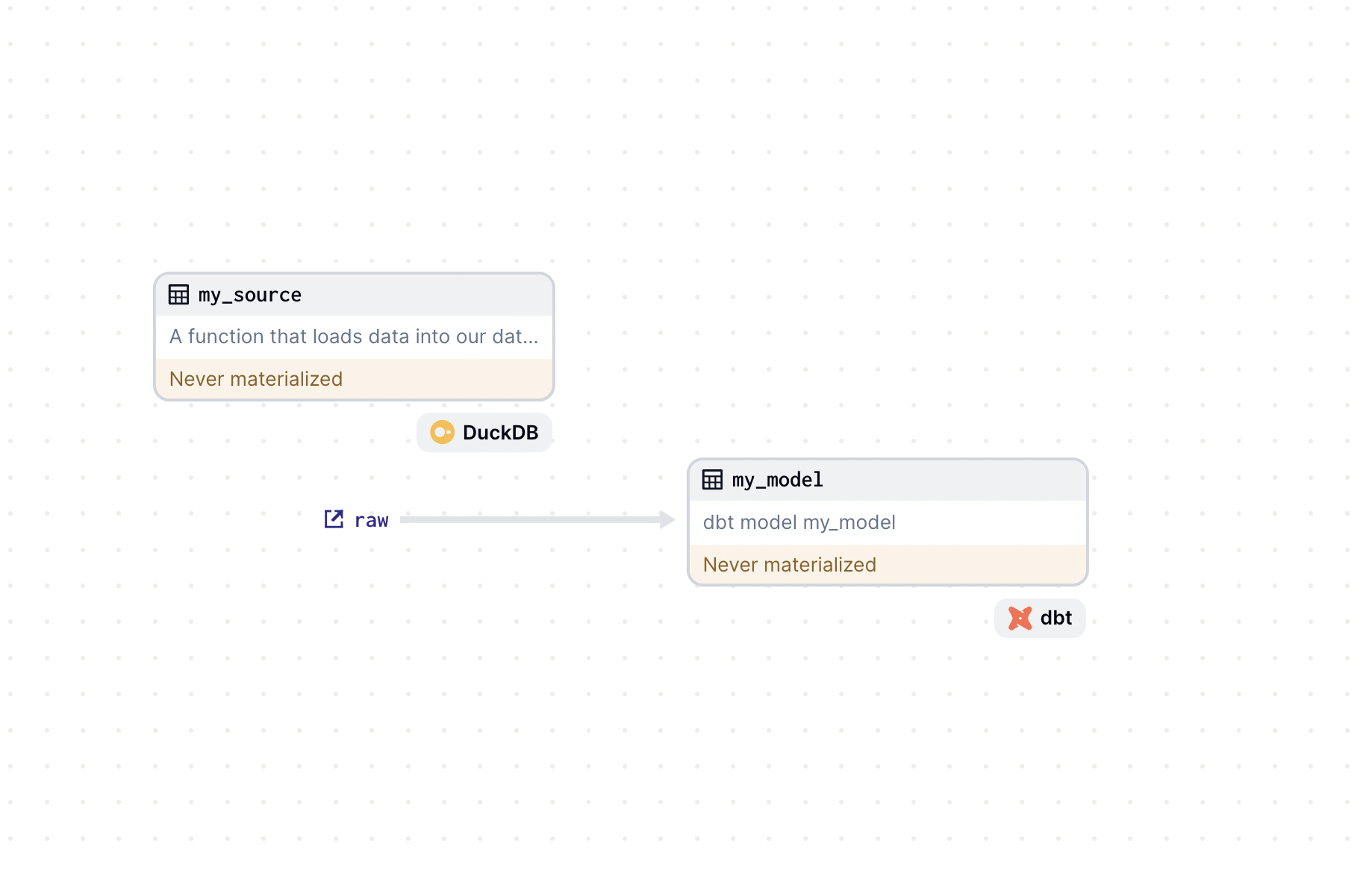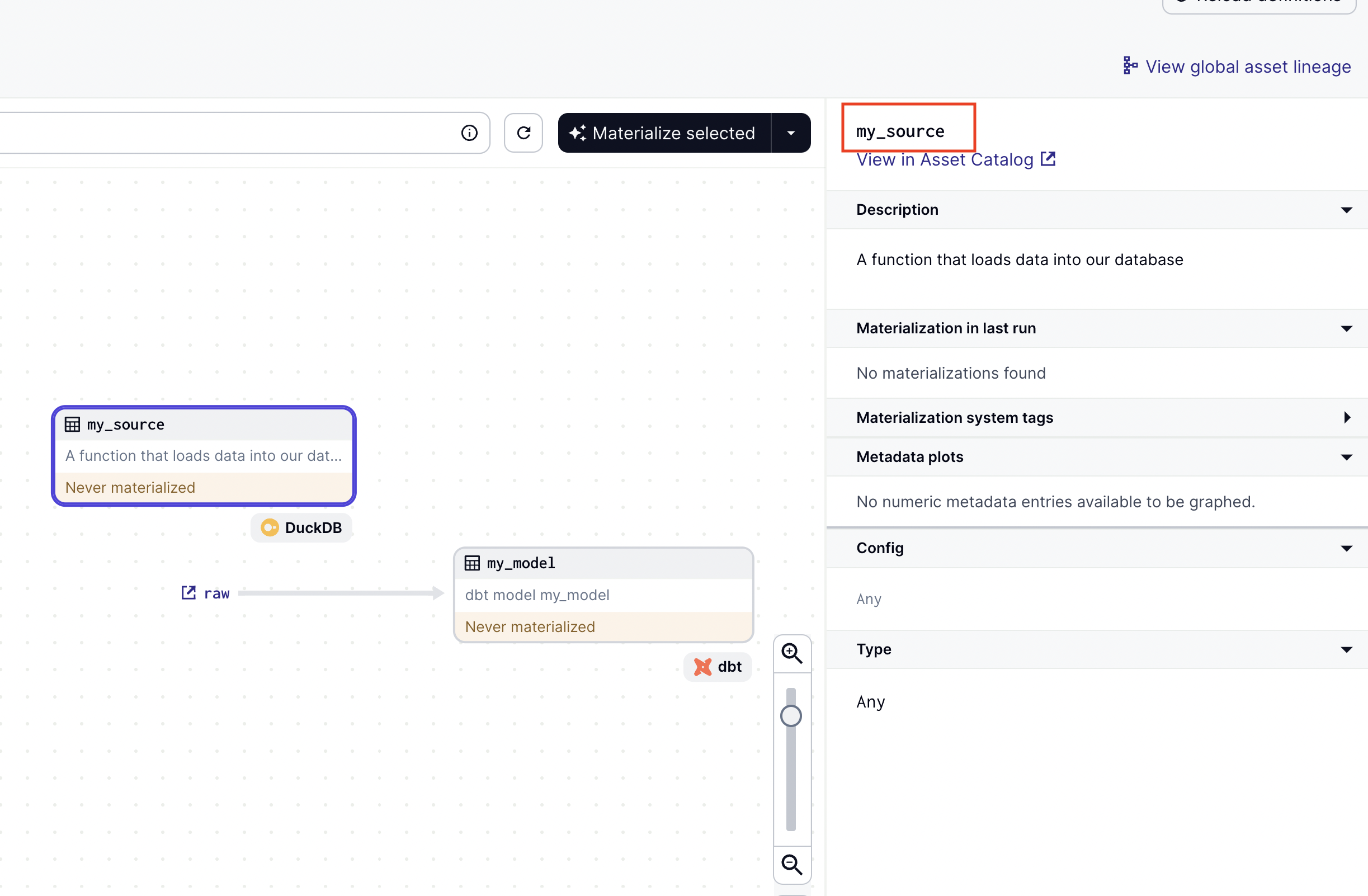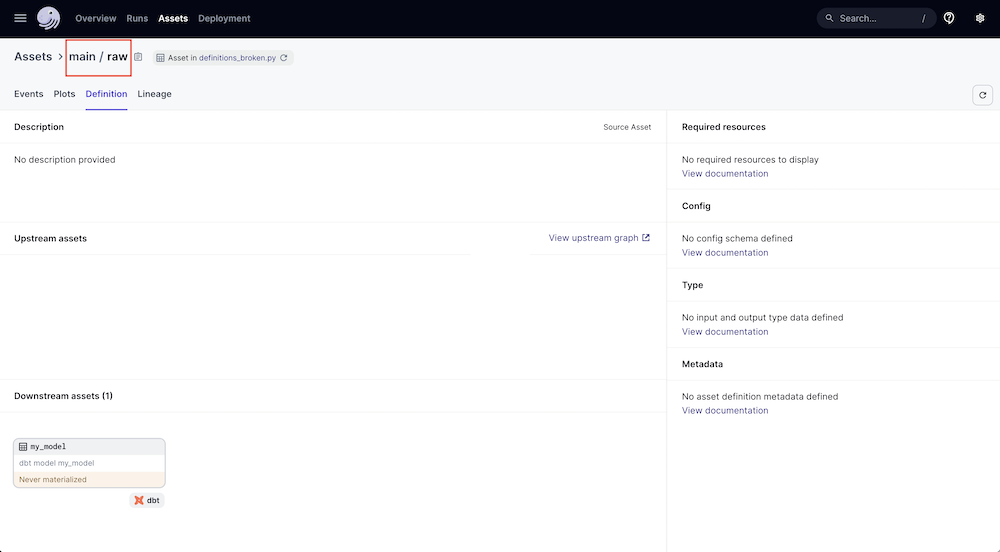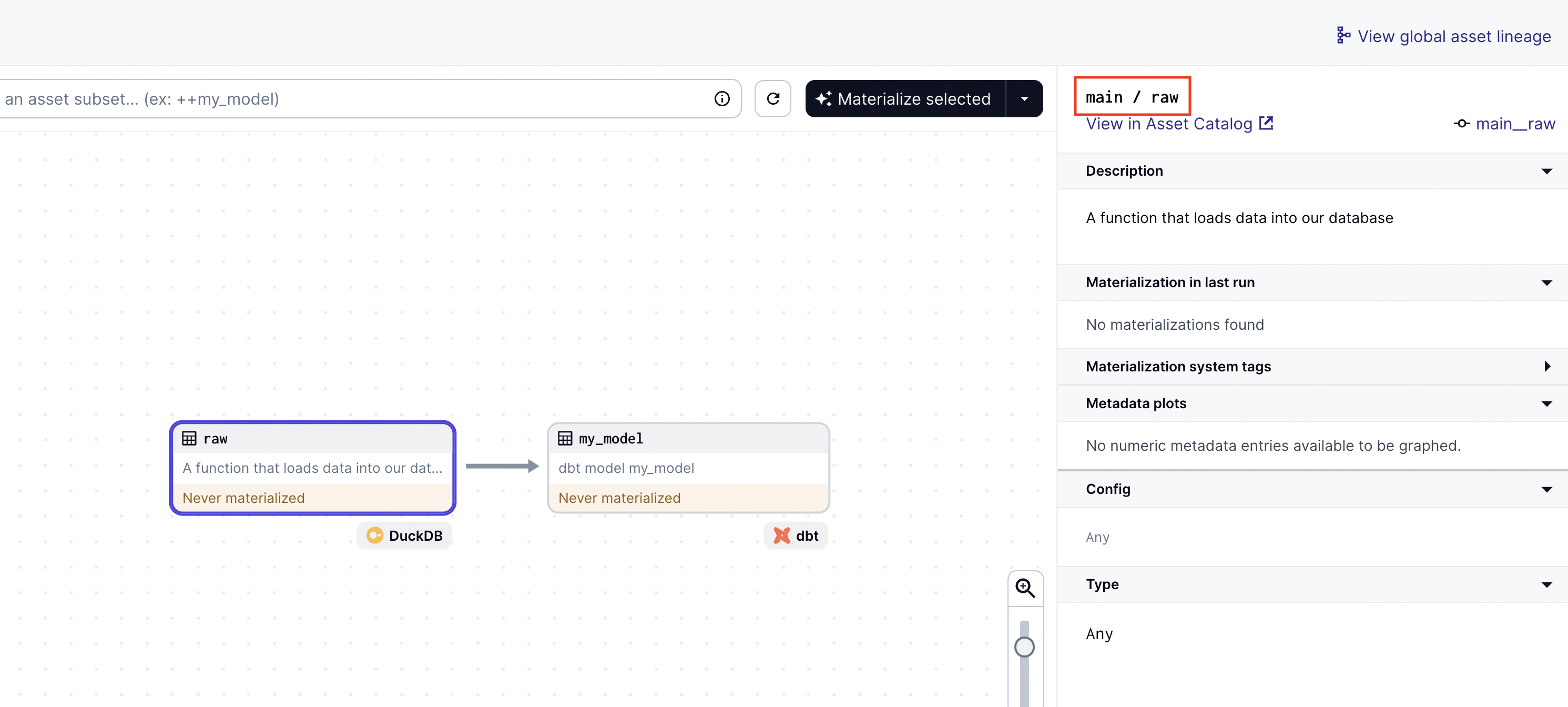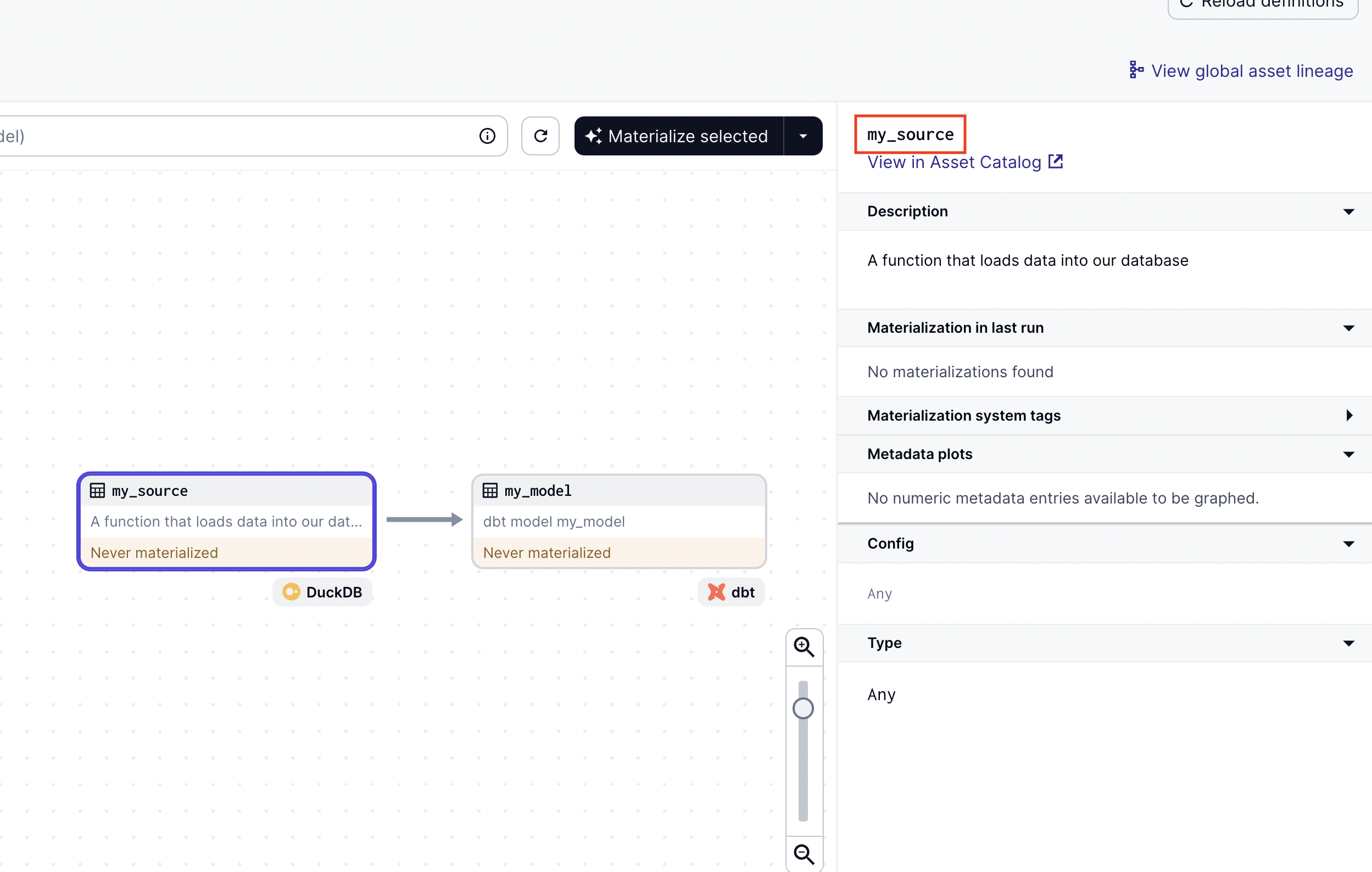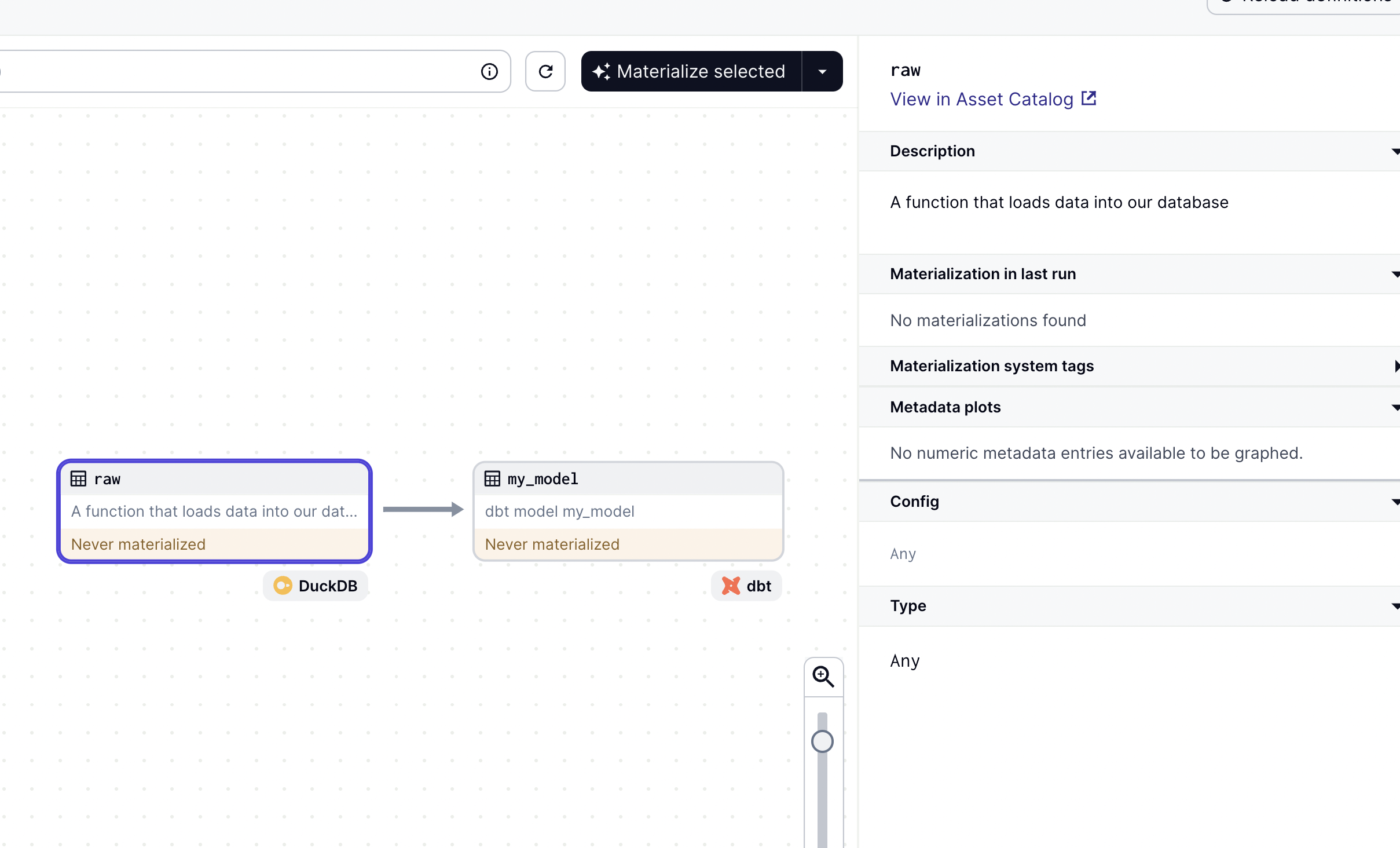Dagster provides global lineage across tools, allowing data engineers to co-ordinate how data flows through their systems and visualize dependencies. A common use case is to create a Dagster project with an asset that loads source data to a warehouse and downstream assets that represent dbt models transforming that source data.
A common problem when first setting up this type of project is not having the correct lineage:
This project shows why this problem occurs and how to fix it.
First setup the project by installing the necessary dependencies:
pip install -r requirements.txtTo confirm everything is ready:
python seed.py
dbt build --project-dir dbt_project --profiles-dir dbt_projectIn definitions_broken.py we have a simple Dagster project that implements the common scenario described above. An asset, my_source, defines the data load. dbt_assets is used to ingest the dbt models into assets. To run this project:
dagster dev -f definitions_broken.py
While the project loads, the lineage is incorrect. Why?
If we select our asset, my_source, we can see the asset key is "my_source" with no prefix:
If, however, we look at the dbt asset, and click on raw, we can see that the dbt asset expects an upstream asset with the asset key "main / raw":
To create the proper lineage, we need to be sure that the upstream asset we are creating has the same asset key as what the dbt asset is expecting.
This is true even if the upstream asset is coming from an integration, such as load_assets_from_airbyte_instance or load_assets_from_fivetran_instance.
How do we know what the dbt asset is expecting for the upstream asset key? When Dagster loads a dbt project via dbt_assets, it uses the dbt manifest to determine the lineage. The upstreams are based on the dbt {{ source() }} references. In this case, the dbt model my_model has a source named main.raw which dagster translates into an asset with the key "main/raw".
To fix the lineage graph, we need to force the asset keys to line up. There are three ways:
-
Modify the upstream asset so the asset key matches what the dbt asset automatically expects.
-
Modify the dbt sources.yaml to manually specify what asset key in Dagster represents a given dbt source.
-
Create a
CustomDbtTranslatorto programmatically modify what asset keys in Dagster map to dbt sources.
We can adjust the code in definitions_broken.py so that the my_source asset includes an asset key that matches the expected dbt behavior. This option works well if you have full control over the upstream assets.
@asset(
compute_kind = 'duckdb',
key=["main", "raw"]
)
def my_source():
""" A function that loads data into our database """
load_raw()We can adjust dbt_project/models/sources.yml to manually map the source table raw to the dagster asset key my_source:
version: 2
sources:
- name: main
tables:
- name: raw
meta:
dagster:
asset_key: ["my_source"]Option 2 can be tedious if you have many assets. A programmatic way to map the dbt sources to dagster asset keys is by creating a CustomDbtTranslator. The following alternative to definitions_broken.py shows the approach, relying on the asset raw matching the dbt source table name: "raw" which is specified as upstream key in the custom dbt translator.
from dagster import asset, Definitions, AssetExecutionContext, AssetKey
from dagster_dbt import dbt_assets, DbtCliResource, DagsterDbtTranslator
from seed import load_raw
import os
from pathlib import Path
from dagster_dbt import DbtCliResource
@asset(
compute_kind = 'duckdb'
)
def raw():
""" A function that loads data into our database """
load_raw()
DBT_PROJECT = "dbt_project"
MANIFEST = DBT_PROJECT + "/target/manifest.json"
dbt = DbtCliResource(project_dir=DBT_PROJECT)
# always re-genereate the manifest on project reload
dbt.cli(["--quiet", "parse"], target_path=Path("target")).wait()
class CustomDagsterDbtTranslator(DagsterDbtTranslator):
def get_asset_key(self, dbt_resource_props):
key = super().get_asset_key(dbt_resource_props) # default
# dbt_resorce_props is a dict with this metadata: https://schemas.getdbt.com/dbt/manifest/v11/index.html#nodes_additionalProperties
if dbt_resource_props["resource_type"] == "source":
# adjust the key as necessary, here removing the prefix
key = AssetKey(dbt_resource_props["name"])
return key
@dbt_assets(
manifest=MANIFEST,
dagster_dbt_translator=CustomDagsterDbtTranslator()
)
def my_dbt_assets(context: AssetExecutionContext, dbt: DbtCliResource):
""" Function to create assets for dbt models """
yield from dbt.cli(["build"], context=context).stream()
defs = Definitions(
assets=[raw, my_dbt_assets],
resources = {"dbt": dbt}
)